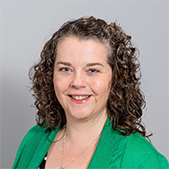Defining Data Definitions and How to Write Them
/Have you ever stopped to wonder what a "data definition" actually is? It's one of those terms that we often toss around in the world of Data Governance, but it's surprising that until now, no one has actually asked me to break it down. When I got an email with this query, I had a bit of an "Aha!" moment. I thought to myself, "Surely, I must have tackled this topic ages ago," but guess what? I hadn't!
Now, "data definitions" might sound a tad on the technical side, but they're an essential piece of the Data Governance puzzle. You might be wondering, "Why didn't this person just Google it?" Well, let me tell you, I did. I braved the labyrinth of Google search results, and honestly, I wouldn't recommend it. It spat out some super technical gibberish, like, "a data definition is the origin of a field that references a data domain and determines the data type and the format of data entry."
The reason these Google results—and others like them—are about as clear as mud is that they're designed to describe data definitions in the context of something called a "data dictionary." But data dictionaries are all about the nitty-gritty technical stuff—like where data lives in a database and its techy constraints. It's not exactly the thrilling stuff business users are itching to know.
So, when we talk about data definitions in the Data Governance realm, we're not diving headfirst into the deep end of tech talk. We're all about making data accessible to the people in your business who need to use it and gain insight from it. We're talking about the entries that populate your data glossary or data catalogue.
Ever notice that in organisations, people often throw around the same terms, but their interpretations can be like comparing apples and oranges? That's where data definitions come to the rescue. We're here to extract those varying interpretations, decide on one common definition, document them, and get everyone on the same page because when stakeholders aren't on the same wavelength, you end up with reports and decisions that are about as reliable as a chocolate teapot.
Now, some data terms are like old friends—easy to define, and everyone's on board. Think "date of birth," "first name," and "last name" in systems with personal info. You could define those in your sleep, and everyone in the organisation would nod in agreement. But then you dive into the murkier waters of terms like "customer…” that's when things can get a bit iffy. What does "customer" mean to you? And what about Bob from accounting? His definition might be worlds apart.
So, the name of the data definitions game is making sure your organisation understands its data inside and out. A big chunk of that process involves pulling those data definitions out of people's heads, getting them down on paper, and achieving a group thumbs-up on what these terms really mean.
Now, I know you might be thinking, "Crafting data definitions sounds like a colossal headache!" But trust me, it's not rocket science. When I talk about a data definition, I'm simply talking about a short, sweet phrase or a couple of sentences that lay out what an item is and what it's all about. No need to overcomplicate things.
Here's a trick I use with my clients: I ask myself, "Could someone who knows nothing about this organisation and its inner workings read this definition and get it?" If the answer is a resounding "yes," then you've nailed it.
Now, here are some practical tips for fantastic data definitions:
Keep It Simple: Your definitions should be clear and straightforward. No need for data Shakespeare here—simplicity is your friend.
Plain Language: Avoid techy talk and opt for plain language that even your grandma could understand.
Stay Objective: Write definitions from a neutral standpoint. Ditch the department-specific biases.
Team Effort: Get the relevant people in on the definition action. Consensus is the name of the game.
Put It to the Test: Before you pop the champagne, test your definitions with non-experts. If they scratch their heads, it's back to the drawing board.
Amp Up the Info: Consider adding extra tidbits like data lineage and usage to your definitions.
In a nutshell, data definitions are the unsung heroes of Data Governance. They bridge the gap between IT and a diverse range of stakeholders.
I hope that was helpful and don't forget if you have any questions you’d like covered in future videos or blogs please email me - questions@nicolaaskham.com.
Or you’d like to know more about how I can help you and your organisation then please book a call using the button below.








